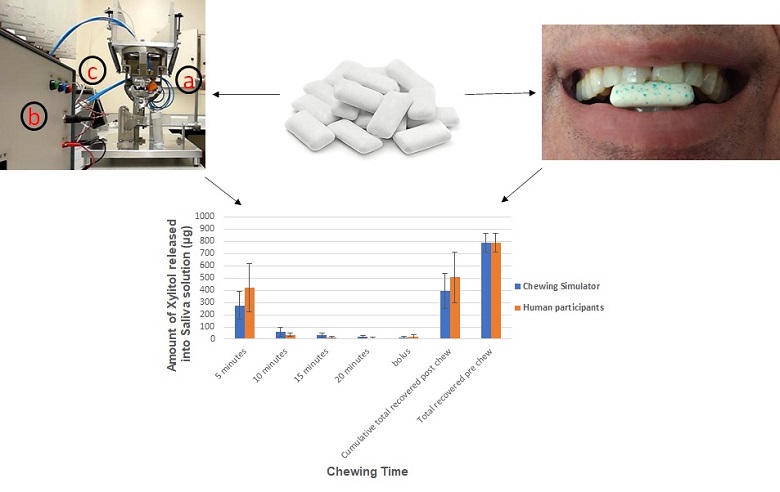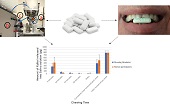
Medicated chewing gum has been recognised as a new advanced drug delivery method, with a promising future. Its potential has not yet been fully exploited because currently there is no gold standard for testing the release of agents from chewing gum in vitro. This study presents a novel humanoid chewing robot capable of closely replicating the human chewing motion in a closed environment, incorporating artificial saliva and allowing measurement of xylitol release from the gum. The release of xylitol from commercially available chewing gum was quantified following both in vitro and in vivo mastication. The chewing robot demonstrated a similar release rate of xylitol as human participants. The greatest release of xylitol occurred during the first 5 minutes of chewing and after 20 minutes of chewing only a low amount of xylitol remained in the gum bolus, irrespective of the chewing method used. Saliva and artificial saliva solutions respectively were collected after 5, 10, 15 and 20 minutes of continuous chewing and the amount of xylitol released from the chewing gum determined. Bioengineering has been implemented as the key engineering strategy to create an artificial oral environment that closely mimics that found in vivo. These results demonstrate the chewing robot with built-in humanoid jaws could provide opportunities for pharmaceutical companies to investigate and refine drug release from gum, with reduced patient exposure and reduced costs using this novel methodology.

